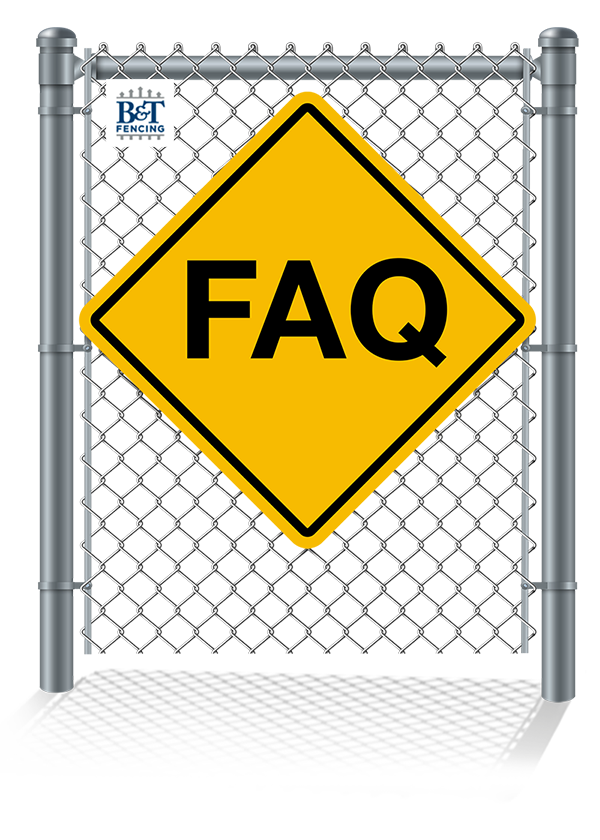Commercial Chain Link
Bollards
Commercial bollards are an effective and versatile security solution that can be used in a variety of settings, including retail centers, office buildings, and industrial sites. These sturdy steel or concrete posts are designed to be placed around the perimeter of a property, creating a physical barrier that can help prevent vehicles from entering and causing damage or injury.
In addition to their practical benefits, commercial bollards also offer aesthetic appeal. They can be designed to complement the architecture and design of a building, and they can be painted or finished in a variety of colors to match the property’s branding or aesthetic.
It’s important to consider factors such as size, weight, and materials when choosing commercial bollards, in order to ensure they provide the necessary level of security and protection. Our professional staff can help you customize this cost-effective and versatile solution for securing properties and controlling traffic flow.
Commercial Services
INSTANTLY CALCULATE YOUR FENCE COSTS!
Use our Instant Fence Estimator Tool to draw the lines of your fence right on an interactive map, choose your fence materials and details, and get a quote of the costs in minutes! You can compare fence types and get started for FREE!
Almost all permanent commercial chain link fences have a top rail to support the weight of the chain link fabric and keep it from sagging over time. The fabric is tied to the rail using wire ties, which keeps the fence tight and prevents bending of the wire tops. Sometimes the top rail is left off purposely to make jumping the fence more difficult.
A bottom rail will prevent people from pulling up the wire and climbing under it. On ball fields, it helps to keep players from sliding under them accidentally.
Often, chain link fences taller than 6′ also have a mid-brace rail, at least on each section between a terminal post and a line post, to help to keep the terminal post from being pulled over due to the high tension needed to keep the stretched fabric taut.
The diameter of the wire strand is what determines the gauge of the chain link. It is a little counter-intuitive, but the higher the gauge, the thinner the wire; so, for example, 9 gauge galvanized chain link fabric is made from a wire strand that is .148″ in diameter, while 12 gauge galvanized chain link fabric is made from wire strand that is only .106″ in diameter.
For commercial chain link fence purposes, 9 gauge wire is commonly used. Some applications require a heavier 6 gauge wire which is stronger and harder to cut. 6 gauge wire is very heavy and hard to stretch and is usually reserved for heavy industrial and high-security situations.
Lighter-weight 11 or 12 gauge wire is usually used for a temporary event or construction fence.
Common chain link fence heights include a range from 3 feet to 12 feet in height though almost any height is possible.
A chain link fence is a type of woven fence usually made from galvanized steel wire. The chain link fence wire runs vertically and is bent into a zigzag pattern so that each “zig” hooks with the wire immediately on one side and each “zag” with the wire on the other. This forms the characteristic diamond pattern seen in this type of steel fence.
A typical chain link mesh will have a diamond size (measured on the diagonals) of 2″ or 2 ¼”, although smaller diamond sizes of 1 ¾” and 1 ¼” are also common.
A chain link fence will have a diamond pattern and the mesh size, or opening of the diamond opening, is measured on the diagonals of the pattern. Here are some examples of available mesh sizes:
- 2 ¼” Suitable for temporary fences or residential use
- 2″ Standard for use on most commercial and industrial applications
- 1 ¾” – 1 ½” Standard for use on tennis courts and backstops so balls don’t get stuck
- 1 ¼” Considered climb-resistant and meets pool code requirements in many cities
- 1″ Considered highly climb-resistant and often used for security applications
The diameter of the wire strand is what determines the gauge of the chain link. Here are examples of chain link fence wire thicknesses:
- 11 Gauge Suitable for temporary fences or residential use and for the canopy on backstops
- 9 Gauge Standard weight for most commercial and industrial applications and higher areas of backstops.
- 6 Gauge Commonly used for heavy-duty security applications and lower portion of backstops

